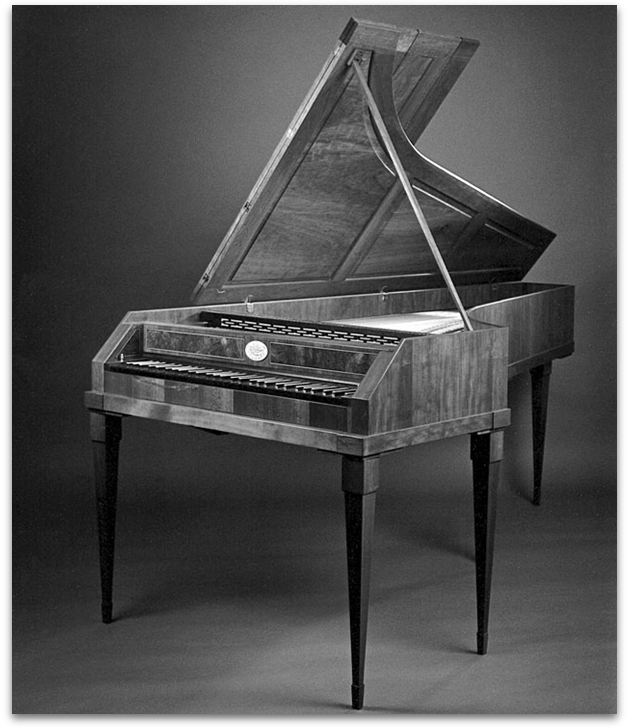
A fortepiano is an early piano. In principle, the word “fortepiano” can designate any piano dating from the invention of the instrument by Bartolomeo Cristofori around 1700 up to the early 19th century. Most typically, however, it is used to refer to the late-18th to early-19th century instruments for which Haydn, Mozart, and the younger Beethoven wrote their piano music. Starting in Beethoven’s time, the fortepiano began a period of steady evolution, culminating in the late 19th century with the modern grand.
The fortepiano has leather-covered hammers and thin, harpsichord-like strings. It has a much lighter case construction than the modern piano and, except for later examples of the early nineteenth century (already evolving towards the modern piano), it has no metal frame or bracing. The action and hammers are lighter, giving rise to a much lighter touch, which in wellconstructed fortepianos is also very expensive.
The range of the fortepiano was about four octaves at the time of its invention and gradually increased. Mozart (1756–1791) wrote his piano music for instruments of about five octaves. The piano works of Beethoven (1770–1827) reflect a gradually expanding range; his last piano compositions are for an instrument of about six and a half octaves. (The range of most modern pianos, attained in the 19th century, is 7⅓ octaves.)
Fortepianos from the start often had devices similar to the pedals of modern pianos, but these were not always pedals; sometimes hand stops or knee levers were used instead. Like the modern piano, the fortepiano can vary the sound volume of each note, depending on the player’s touch. The tone of the fortepiano is quite different from that of the modern piano, however, being softer with less sustain. Sforzando accents tend to stand out more than on the modern piano, as they differ from softer notes in timbre as well as volume, and decay rapidly. Fortepianos also tend to have quite different tone quality in their different registers – slightly buzzing in the bass, “tinkling” in the high treble, and more rounded (closest to the modern piano) in the mid range. In comparison, modern pianos are rather more uniform in sound through their range.
At the St. Ann’s Kennebunkport 2024 Concerts, Ian Watson will perform on a 5-Octave Viennese Fortepiano just like one owned by Mozart in 1784. This fortepiano is based on a design by Anton Walter (1752-1826), a friend of Mozart, and was crafted in Freeport Maine by famous American keyboard maker, R. J. Regier.
Source: Wikipedia